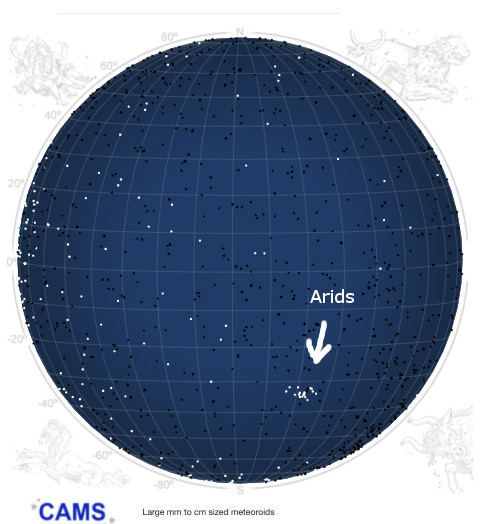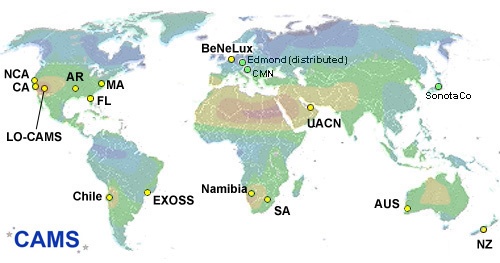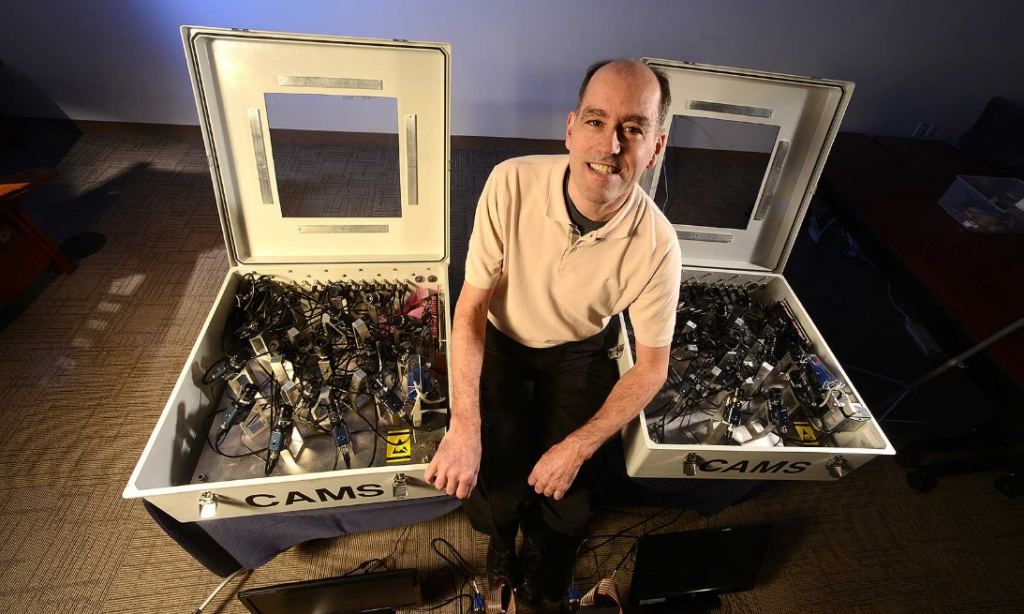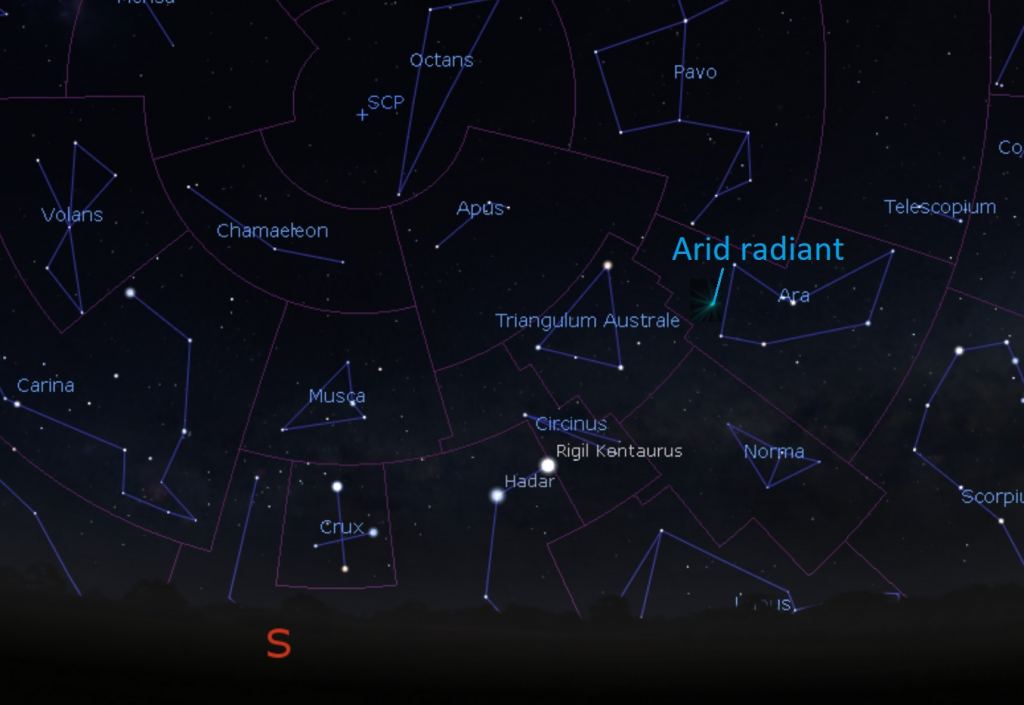The new Arid meteor shower may be making itself known in early October 2021.
It’s not every day that we witness an outburst from a new meteor shower gracing the skies of the Earth. But that’s just what may be in store this week for fortunate observers deep in the southern hemisphere, with the advent of the Arid meteors.
The shower in question should radiate from the otherwise obscure southern hemisphere constellation of Ara the Altar (perhaps, they should be known as the ‘Ara-tids?’ The radiant position is Right Ascension 17h 7’, Declination -57.5 degrees south.
 Arid meteor activity, in CAMS’ All-Sky view. Credit: SETI/NASA Ames/CAMS
Arid meteor activity, in CAMS’ All-Sky view. Credit: SETI/NASA Ames/CAMSThe source of the shower is short period Comet 15P/Finlay. On a 6.5 year orbit, Comet 15P reached perihelion on July 13th this past summer, and its debris trail intersects the Earth’s orbit in early October.
 The worldwide CAMS meteor network. Credit: SETI/NASA Ames/CAMS.
The worldwide CAMS meteor network. Credit: SETI/NASA Ames/CAMS.Early observations of the Arids late last month were promising. Specifically, SETI Institute and NASA Ames Research Center astronomer Peter Jenniskens, and T. Cooper and D. Lauretta of the Astronomical Society of South Africa and the University of Arizona respectively found an uptick of 13 meteors seen in NASA Ames’ worldwide Cameras for All-Sky Meteor Surveillance (CAMS). These cameras were based in New Zealand and Chile, and caught the meteors hailing from the constellation Ara on the clear sky nights of 28-30 September. This is from debris ejected from Comet 15/P Finlay during its perihelion passage in 1995.
Two more, stronger outbursts are projected for the evening of October 6-7th (Wednesday night into Thursday morning). Luckily, the Moon reaches New phase on October 6th, putting it out of view. The first peak courtesy of the 2002 trail is expected to arrive on Oct 7th at 00:35 Universal Time (UT), with the second set for 3:55 UT. This favors the southern tip of South America, though observers across the southern hemisphere should be vigilant for any increase in meteor activity, especially from the direction of the constellation Ara near the region of the south celestial pole. Hey, the southern hemisphere needs more meteor showers…
Meteor trails evolve over time. Two good examples are the Andromedids which produced splendid outbursts in the late 19th century before fading into obscurity (the first meteor photo was of an Andromedid), and the December Geminids which are overtaking the Perseids in the early 21st century as the year’s most dependable annual meteor shower. This evolution is due to the interplay and tug of the interior solar system worlds (mainly Jupiter) on streams of debris laid down by comets during perihelion passages.
 A typical CAMS all-sky meteor camera setup. Credit: SETI/NASA Ames/CAMS.
A typical CAMS all-sky meteor camera setup. Credit: SETI/NASA Ames/CAMS.October is always an interesting month for meteors in general. In addition to a possible Arid outburst, the Taurid fireballs are active in early October, thanks to periodic comet 2P/Encke, holder of the shortest orbital period of any known comet at just 3.3 years. We’ve also got the peak for the elusive Draconids courtesy of Comet 21/P Giacobini-Zinner coming up on October 8th… though 2021 isn’t predicted to be an outburst year like 2011 and 2012. Finally, we have the Orionids on October 21st courtesy of 1P/Halley, though the Full Hunter’s Moon will interfere with the show.
 The Arid radiant near local midnight, as seen from near Santiago, Chile. Credit: Stellarium.
The Arid radiant near local midnight, as seen from near Santiago, Chile. Credit: Stellarium.Keep an eye out for the Arids if you happen to be in the southern hemisphere this week… you may just catch the birth of a new meteor shower in the making.
Lead image: An early Arid meteor from late September. Credit: SETI/NASA Ames/CAMS.

